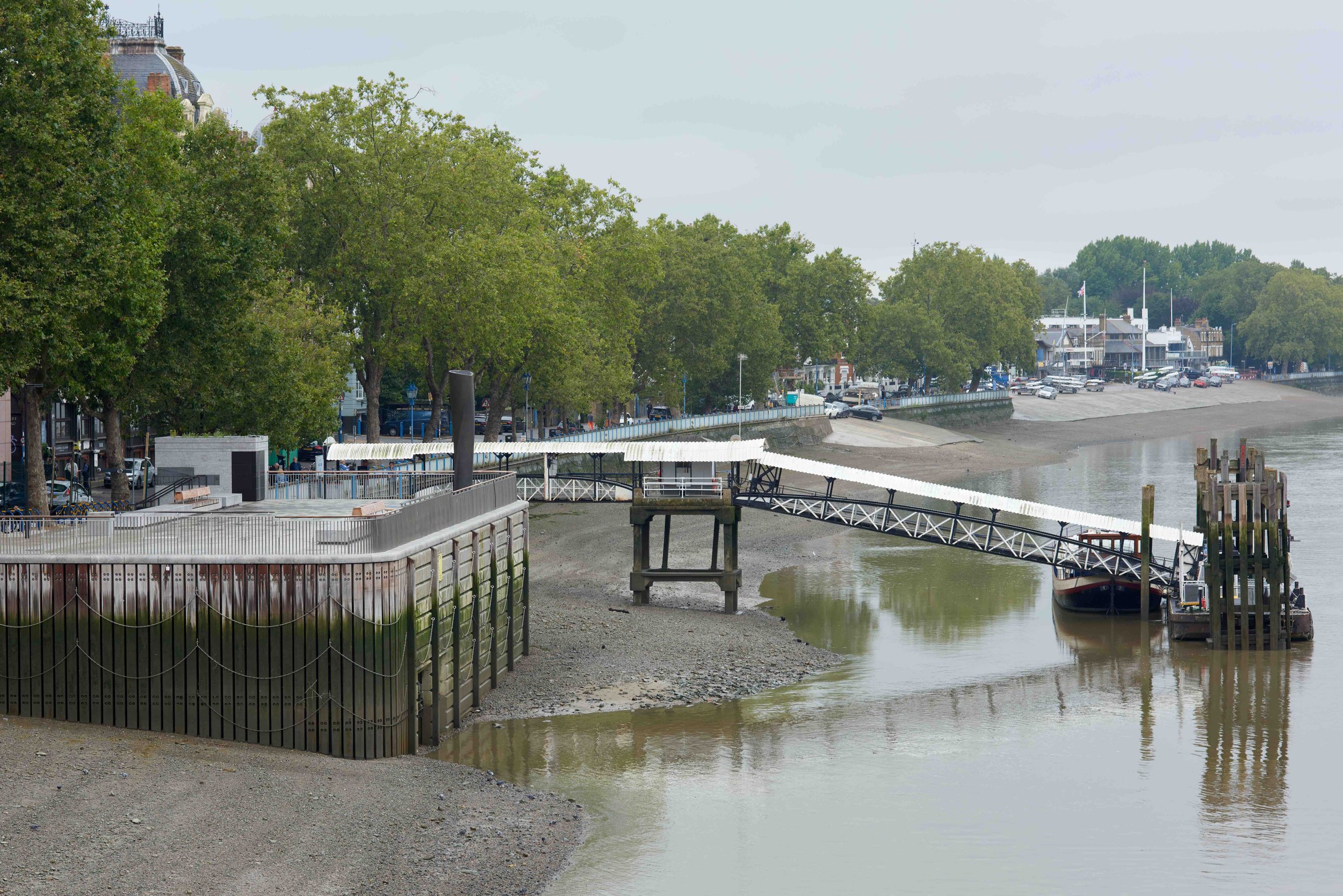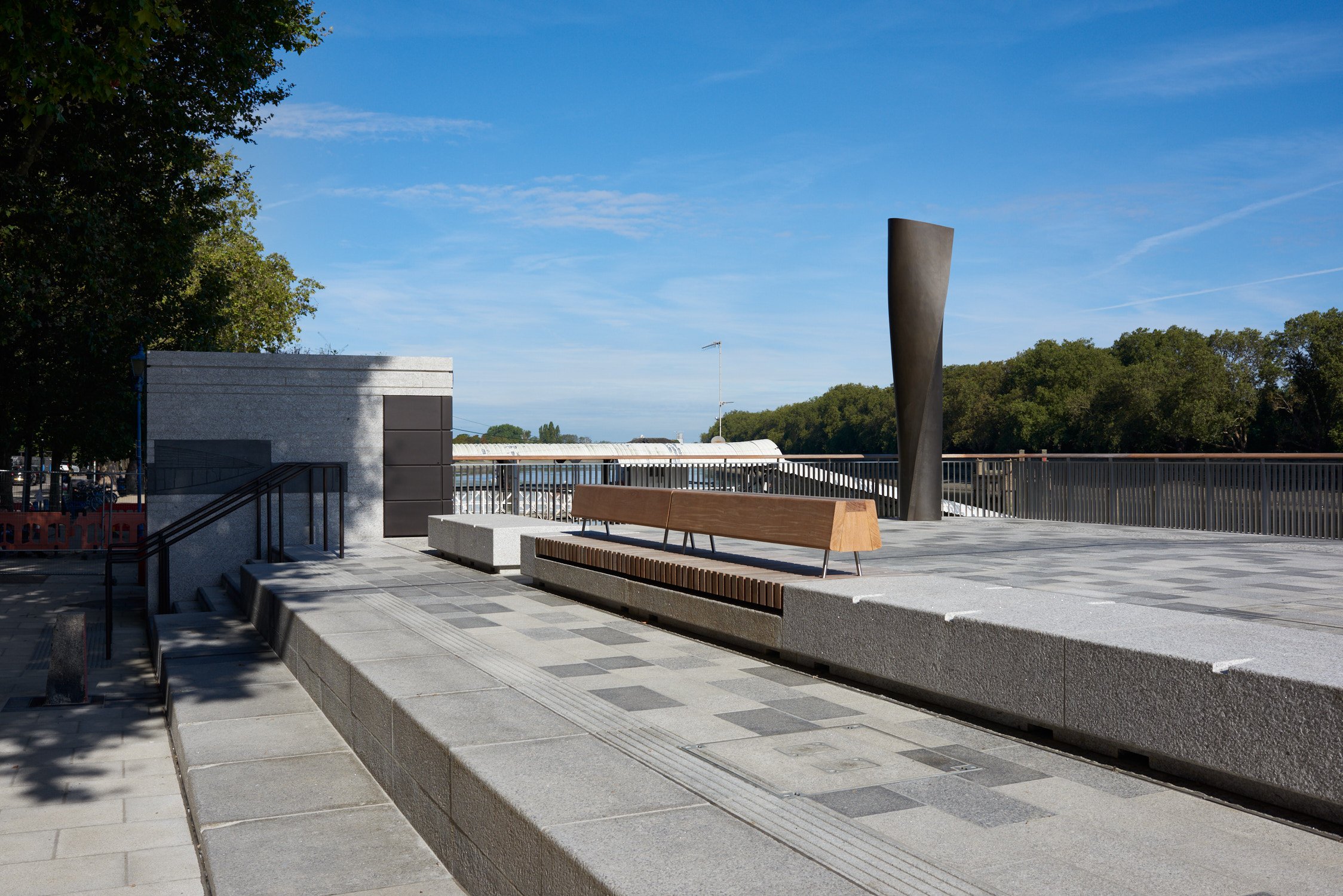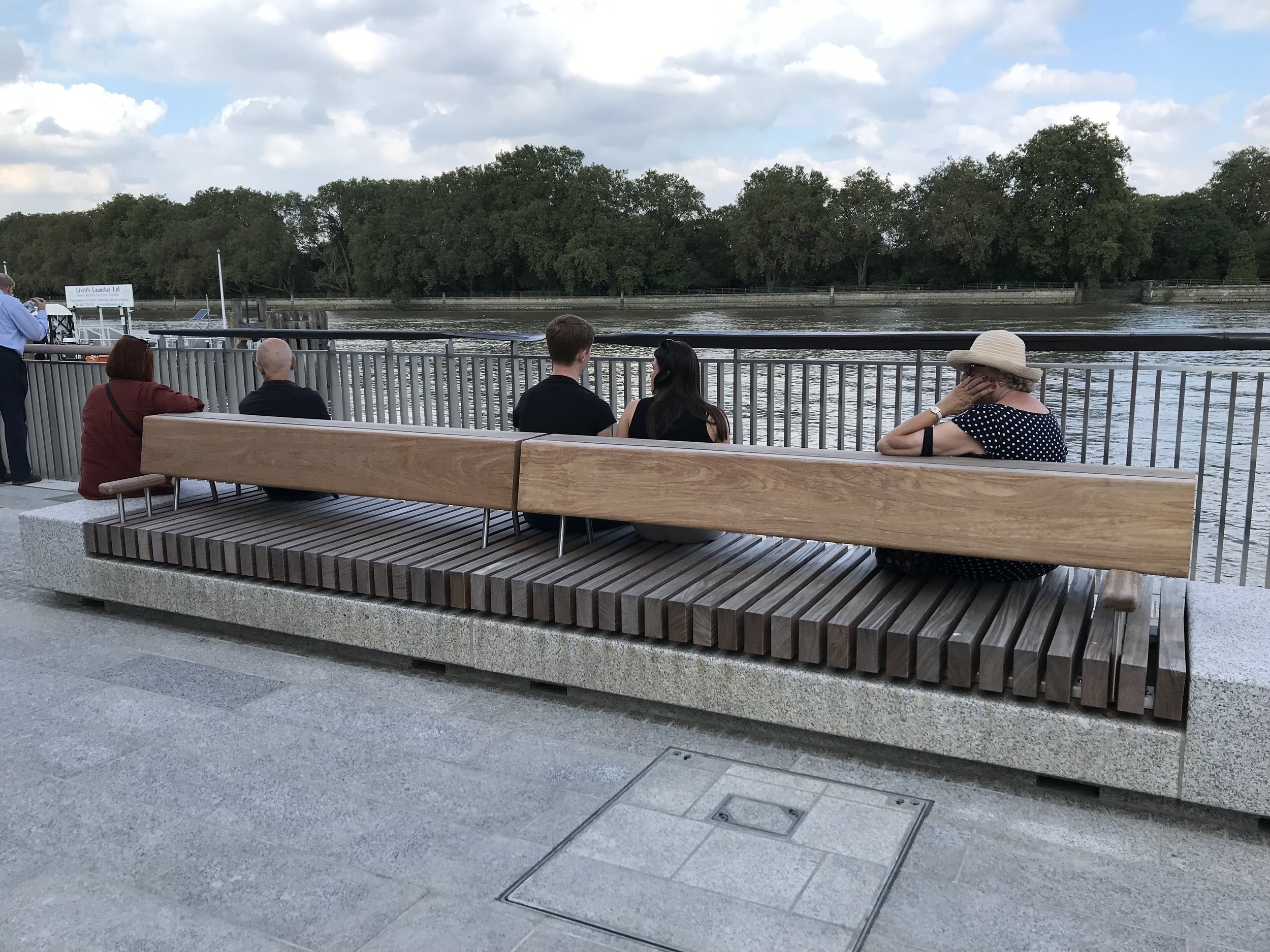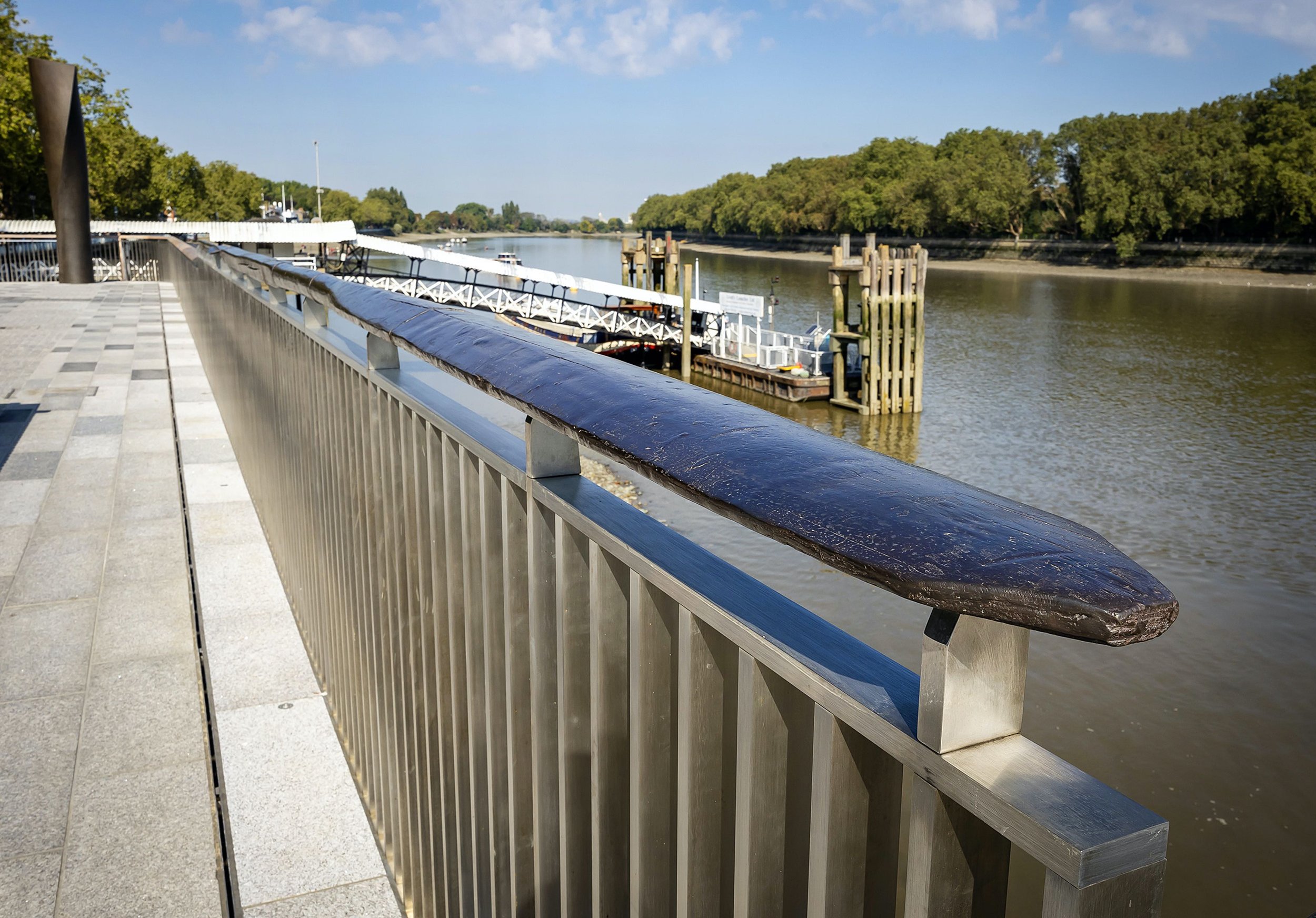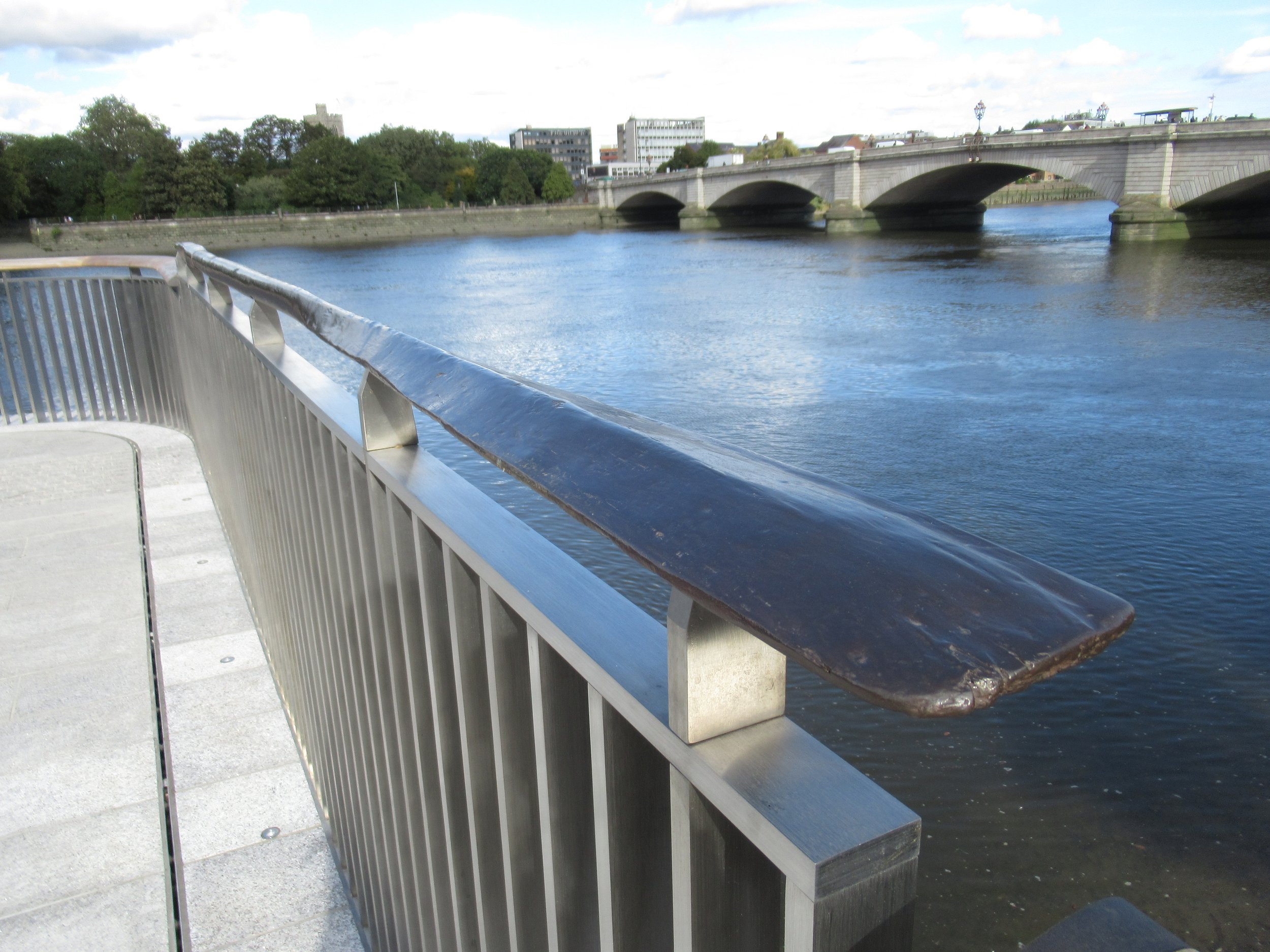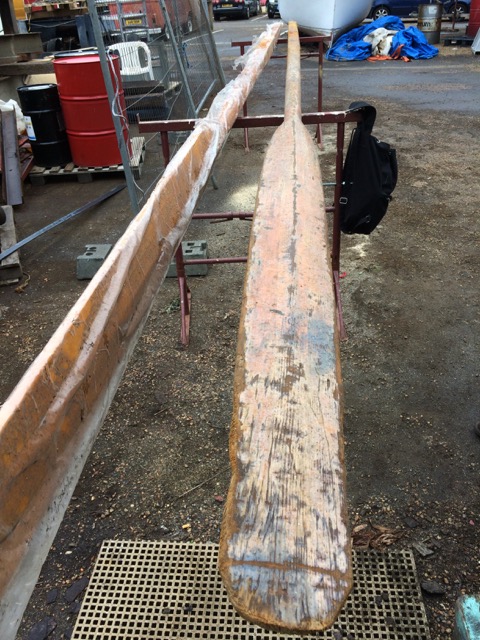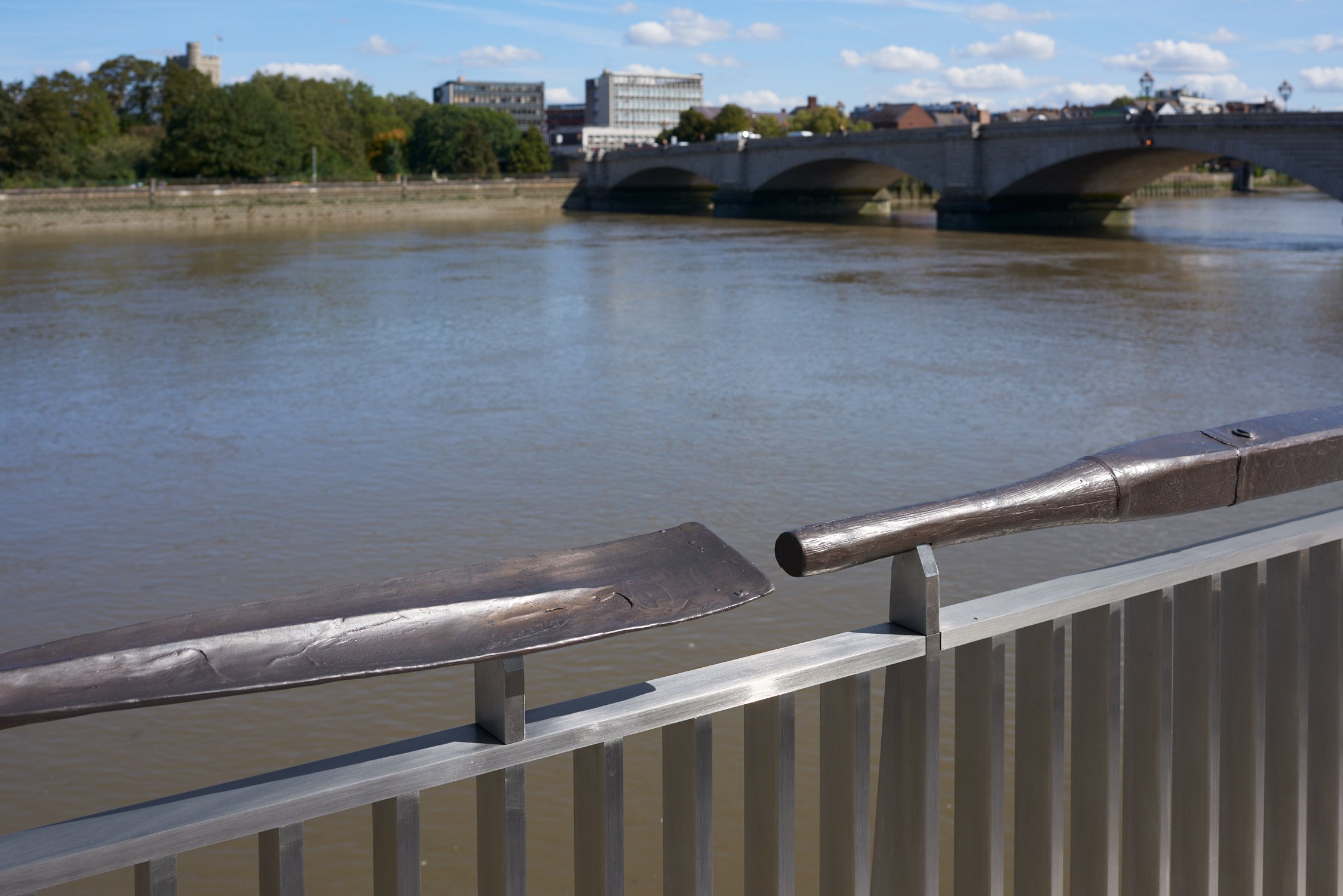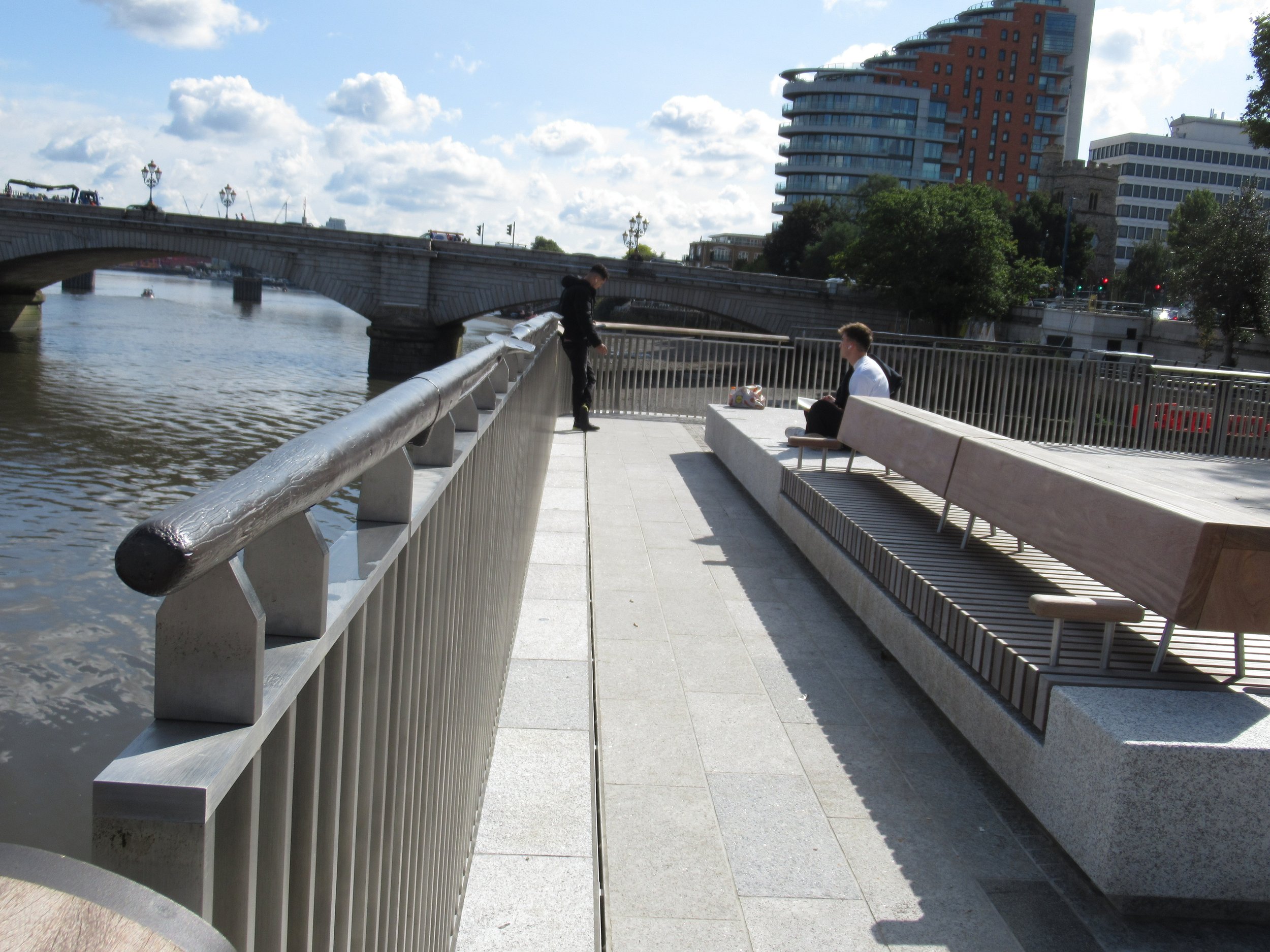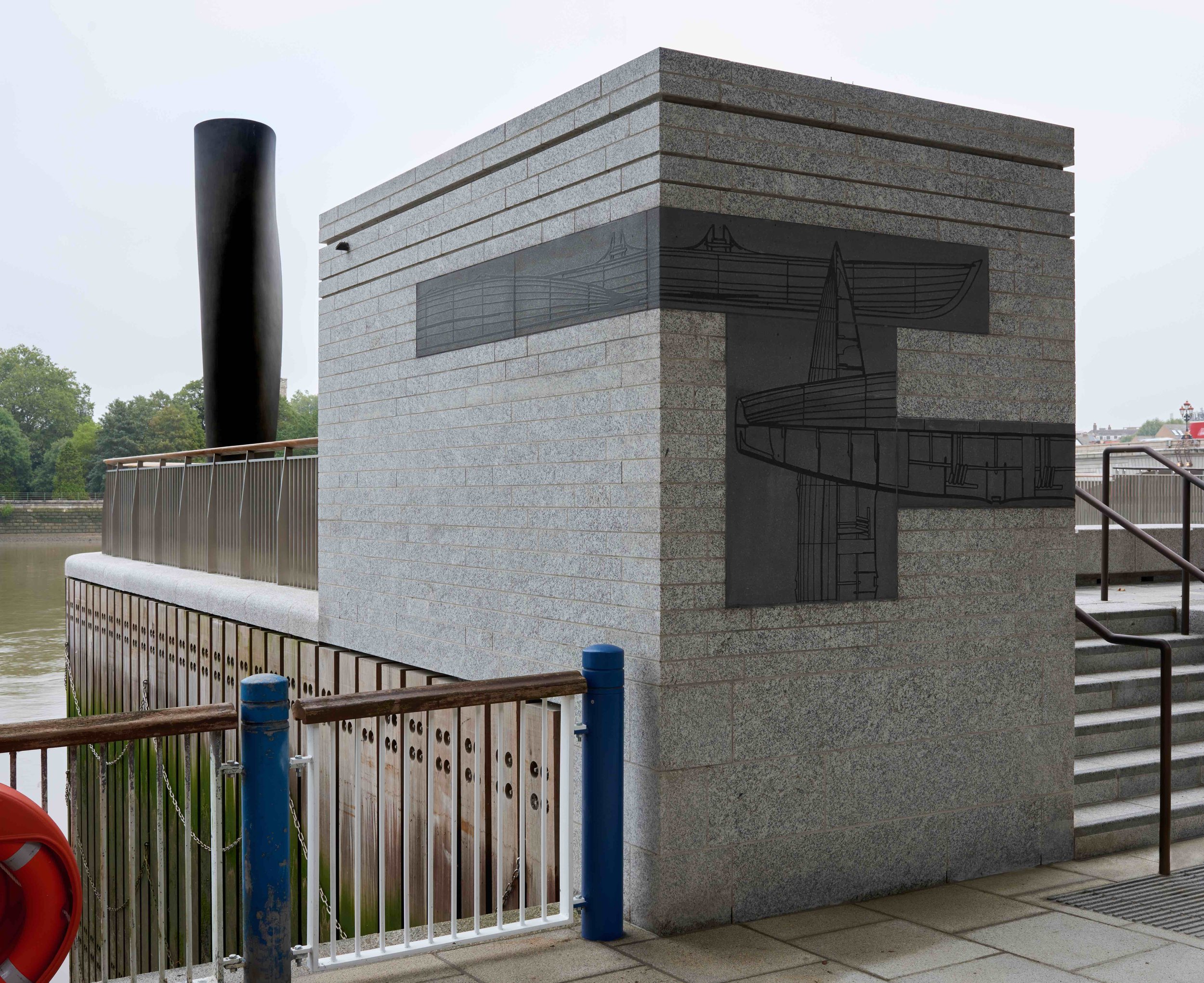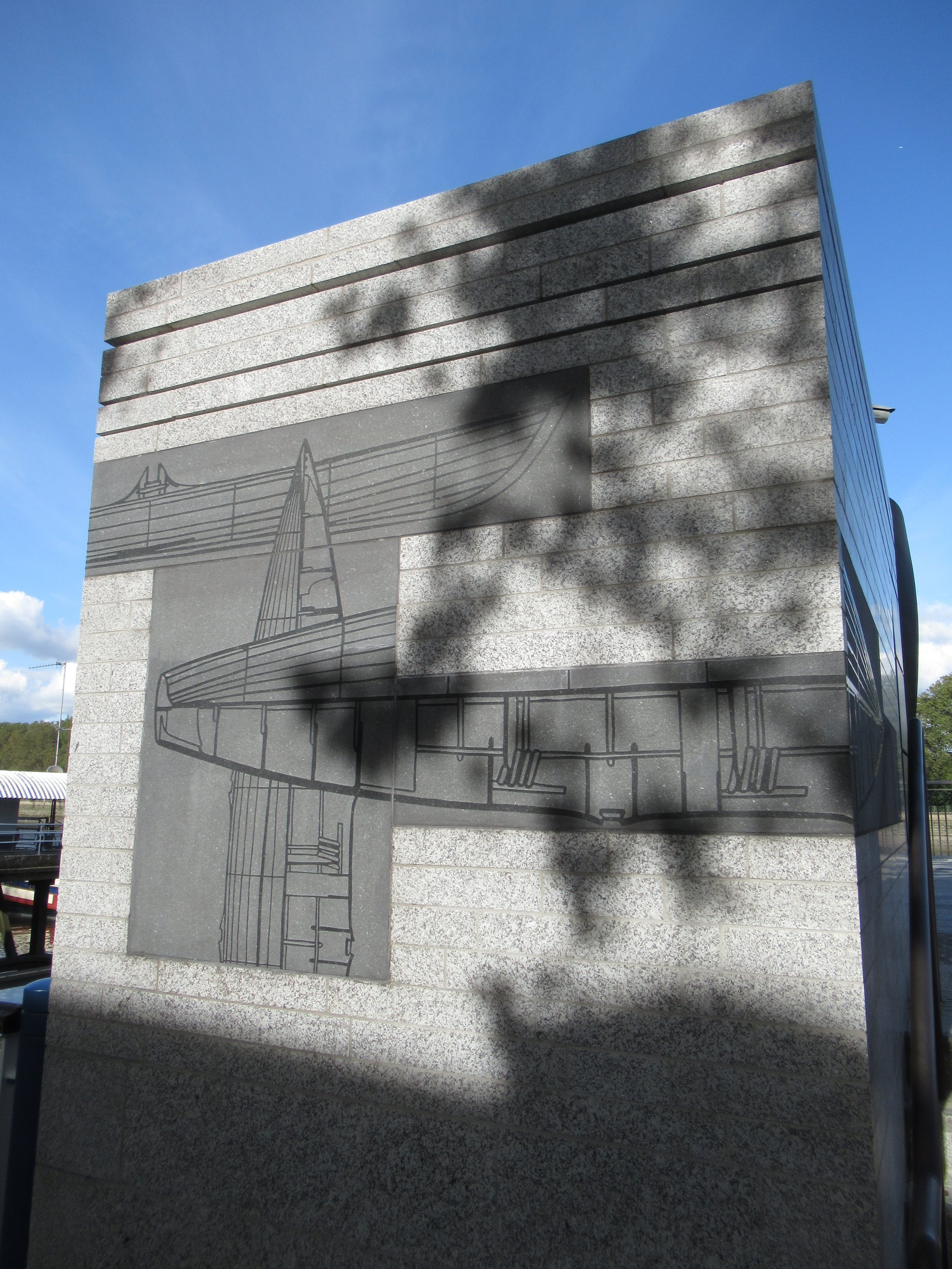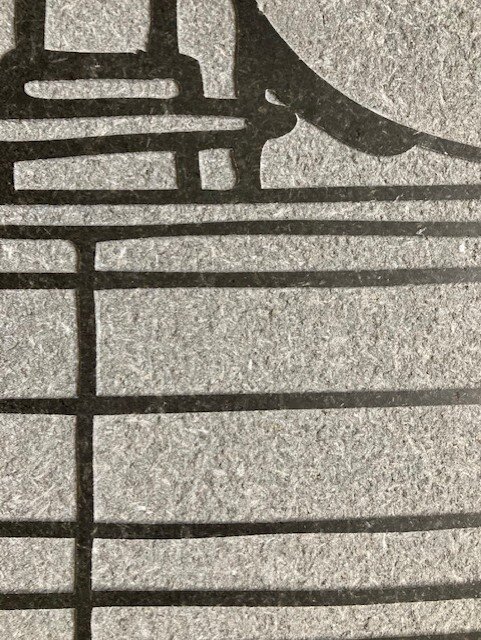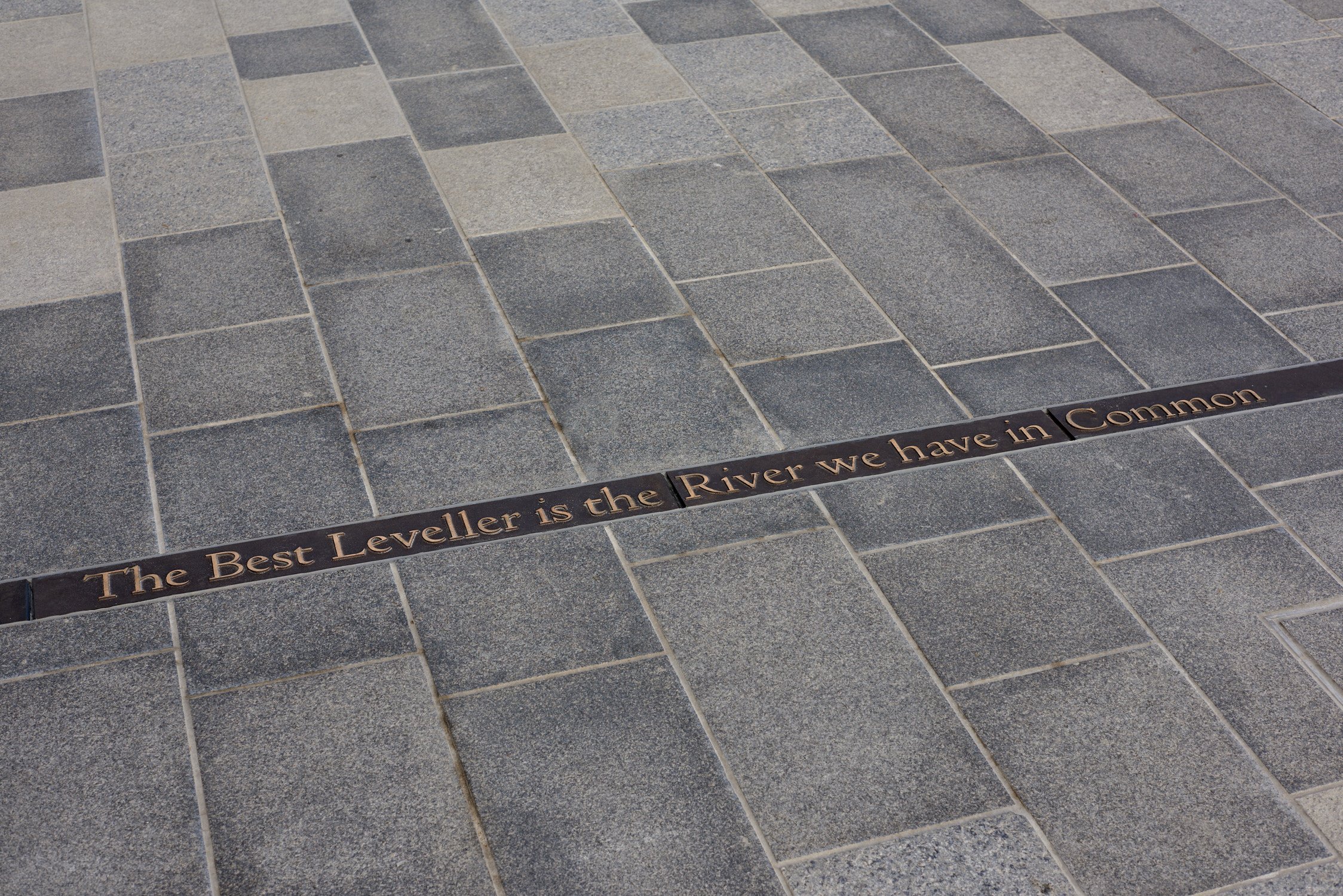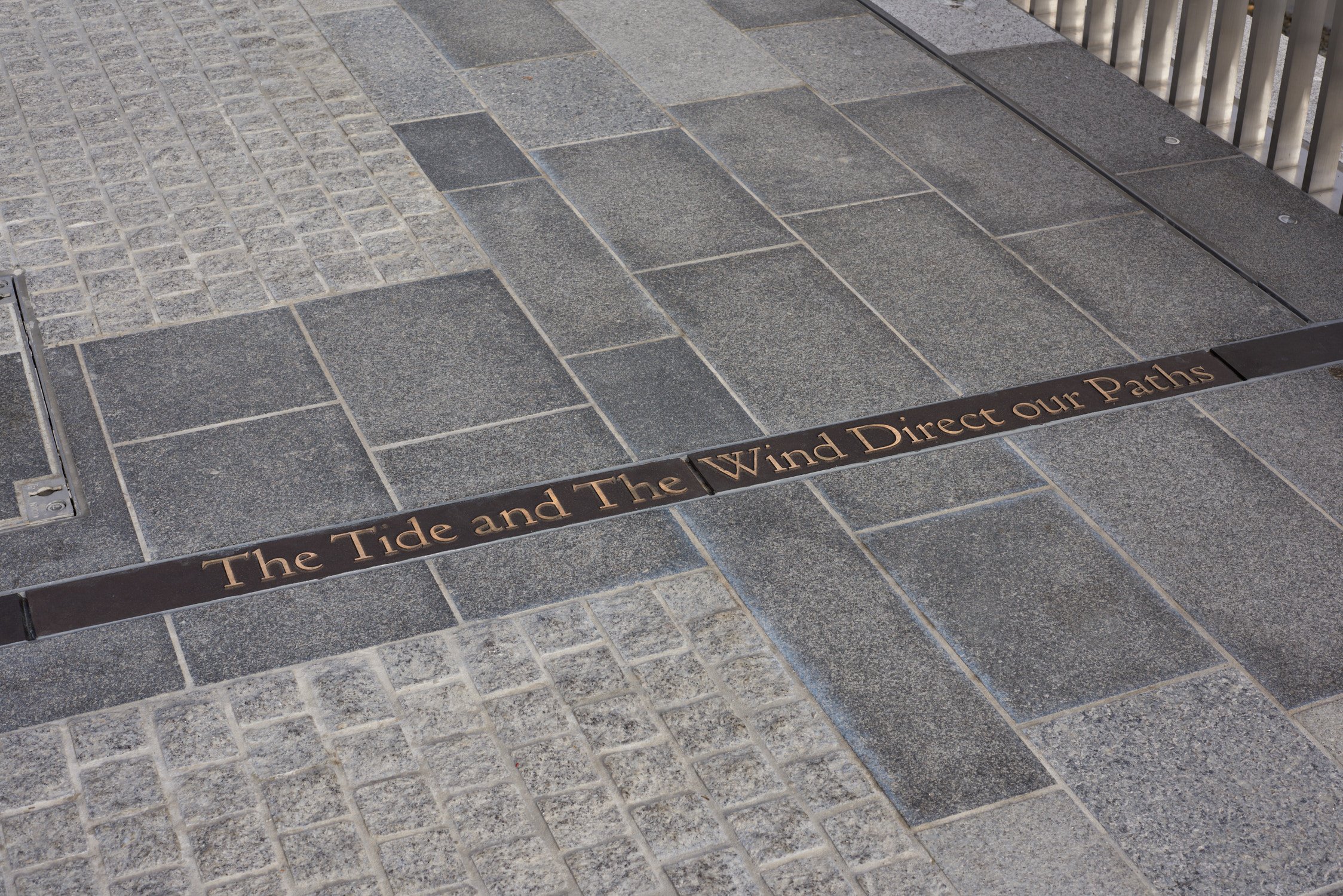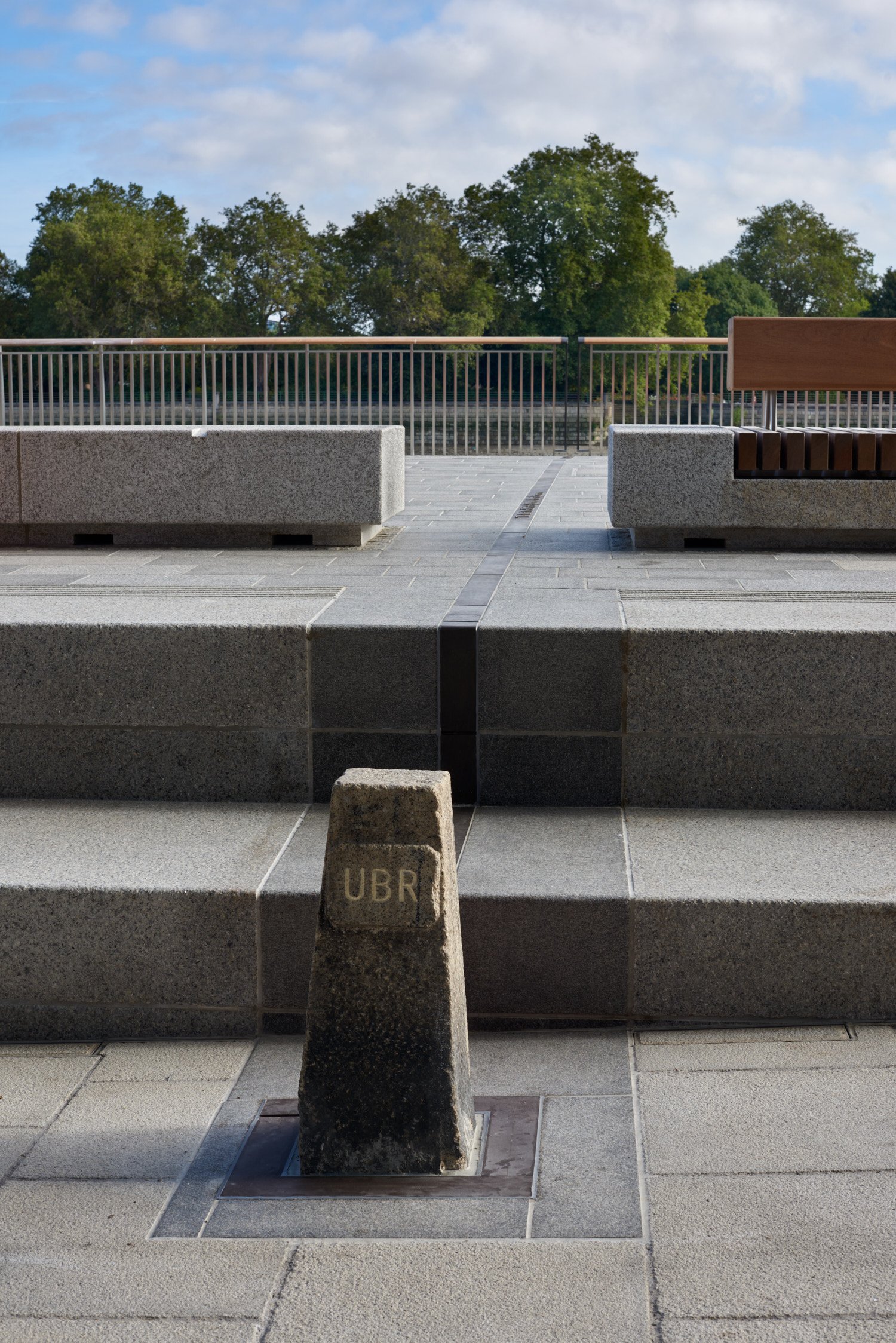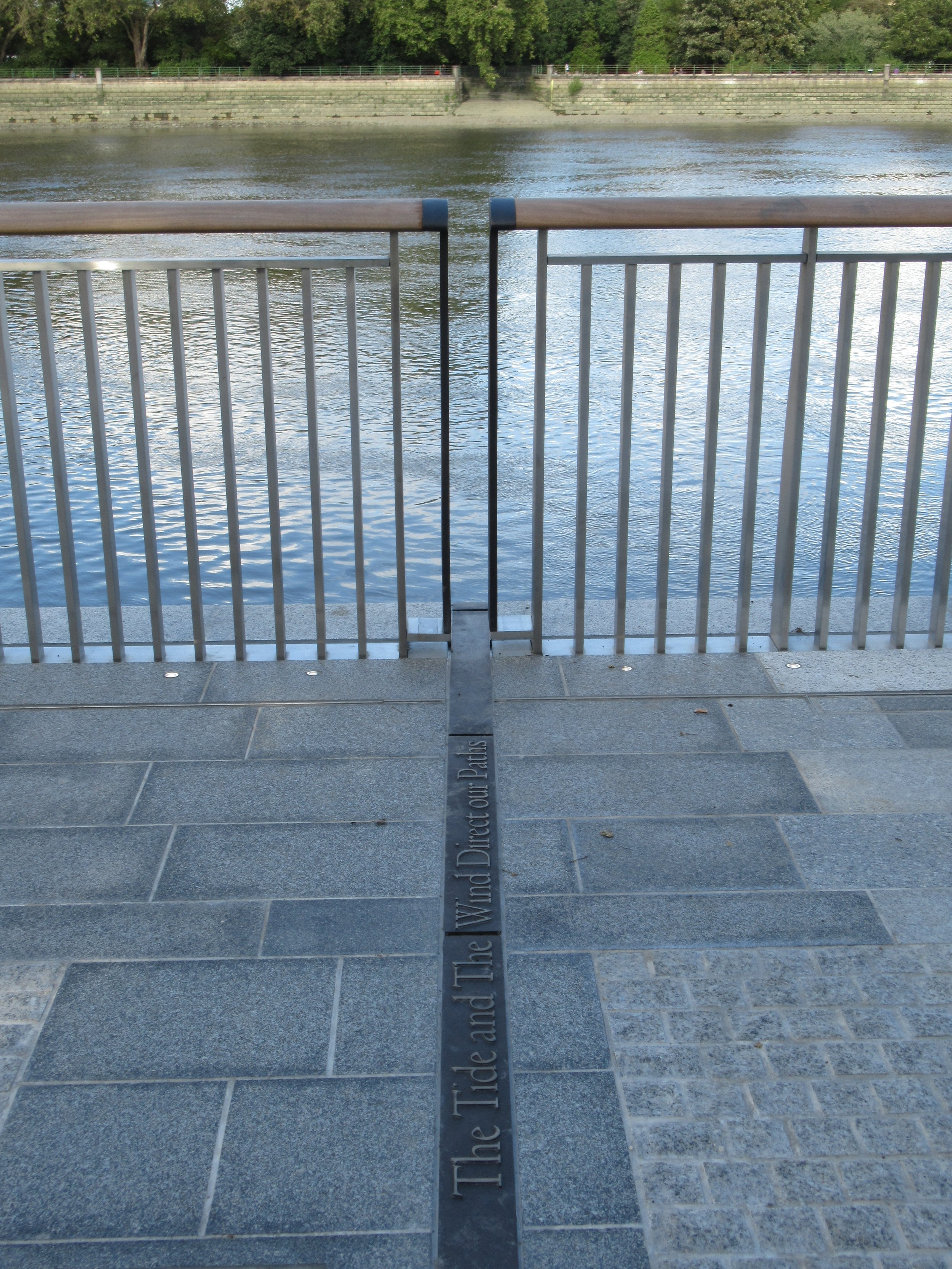Putney Embankment, London
Putney Embankment: Water Finds a Level, Claire Barclay
Year
2023
Client
fereday pollard for Tideway
Artist
Claire Barclay
Service
Commission Management
Location
Putney Embankment, Putney, London
As with the other Tideway permanent commissions, Claire Barclay’s artwork has been conceived in response to the site’s history as set out in Tideway’s Heritage Interpretation Strategy.
The theme for the West section of the tunnel is ‘Recreation to Industry: Society in Transition.’ with the site-specific focus for Putney relating to ways in which cultural context influences popular movements advocating social change, to generate varied forms of political engagement.
In the 17th century the Putney foreshore was busy with commercial boatmen ferrying people and cargo across the river, predominantly in clinker-built wooden boats called wherries. Putney was also home to a number of boat builders and boat related services. With the advent of bridges and steamboats, however, there was a gradual shift from commercial to recreational boat use on this area of the Thames and from 1830 onwards the Putney Embankment became associated with elite rowing through the establishment of the University Boat Race.
Claire’s three artworks, collectively titled Water Finds A Level, refer back to Putney’s heritage as the location of the Putney Debates and a birthplace for democratic thinking, human rights, and civil liberty, as outlined in the Tideway Heritage Interpretation Strategy, aiming to draw attention to the democratic use of the Thames.
“This commission has involved much welcomed delving into the history of the Thames at Putney, and unearthing fascinating facts, narratives and eccentricities about the life of the river. The process has led me to inspiring people whose lives are interwoven with the river and its heritage through work and recreation, and the keeping alive of traditions like barge racing and boat restoration.”
The balustrade handrail
Claire selected three different types of oar from which bronze casts were made to subtly reference the roles played by different vessels and the range of people that have historically used and travelled on the river for leisure, recreation, and work. Formed into handrails, visitors to the site can naturally grip the cast oars in the same way as the original oars were gripped when used to row. The flat parts of the oars also provide alternative leaning points. Details like leather oar collars and wear and tear from rowlocks and general usage have been transferred through the casting process, creating a narrative texture within the resulting forms.
The largest of the cast oars is a seven metre-long wooden barge ‘sweep’ used by Lightermen for manoeuvring barge boats of goods or cargo by using only long sweeps, the wind and the tide. The wherry oar measures 4.6 metres in length and the skiff oar, as the shortest, 2.8 metres. Both oars are traditionally and commonly used on smaller boats for transporting everyday passengers and goods across the river. Over the decades they have been adapted into new forms of boat that are ideal for recreational and competitive rowing.
University Boat Race Marker Strip
For this artwork, Claire has responded to the existing University Boat Race marker stone, which defines the starting point of the annual race between Cambridge University and Oxford University, with a strip of bronze inlaid into the granite paving that runs from the existing marker stone. Inscribed in the strip read the words:
The Best Leveller is the River we have in Common
The Tide and the Wind Direct our Paths
These reiterate the democratic use of the Thames and speak to anyone that has experience of working and playing upon the river. The choice of wording has been informed by found footage the artist came across of a Thames Lightermen describing his superiors as ‘the wind and the tide’.
The artist sees these as being applicable to anyone that has experience of working or playing upon the river, neatly tying the Marker Strip to the ideas behind her sculptural intervention and the HIS. The text is referencing the democratic use of the Thames.
The site is now open to the public, see a film of the opening here.
The bronze was cast by Powderhall Bronze foundry in Edinburgh, fabricated by Alloy Fabweld. IPSurfaces fabricated the granite artwork, all contracted by BMB JV (Morgan Sindall and Balfour Beatty), the main works contractor for the west sites.
The typeface used for the texts is Doves, Robert Green, salvaged some of the type and has recreated a digital facsimile of the Doves Type® and created a bespoke version of the typeface for use by Tideway.
Graphic artwork
For the mechanical and electrical building, Claire has created a graphic artwork sandblasted into specially prepared honed granite blocks that clad part of the south, east and west walls. The artwork uses authentic plans and illustrations from books, archives at the National Maritime Museum, and local traditional boat builders and enthusiasts as its source to depict details of plans of a Thames skiff boat.
Each granite block contains a section or detail of the boat presented as a seemingly random arrangement, suggestive of a boat designer’s drawing board and providing interest from afar as well as detail for close-up scrutiny.
See the film of work in progress.
“I was able to borrow oars and sweeps that bear the marks of wear and tear on the Thames. These have been cast in bronze to create a monument of sorts to the diversity of river use. ”
Claire Barclay’s practice explores conceptual concerns through the intersection of installation, sculpture and printmaking. She has a fascination with historical and anthropological artifacts, and is drawn to ambiguous objects, which trigger curiosities as to their meaning and use. Whilst unfamiliar, these objects are suggestive of particular functions through their form and material characteristics.
She has shown extensively in major group and solo exhibitions internationally and nationally, such as Tate Britain, and she has represented Scotland at the Venice Biennale. Recent solo shows have been at Tramway, Glasgow and the MAC in Belfast. She has also delivered several site-specific projects in collaboration with design teams and architectural firms. Claire is represented by Stephen Friedman Gallery.
For more information and a video of the creation of the site see:
www.tideway.london
Doves Type®, copyright 2017 Robert Green. All rights reserved. The typeface is available to licence via https://typespec.co.uk/doves-type-revival/
Hear more about the font and the Putney Embankment site in this video.

